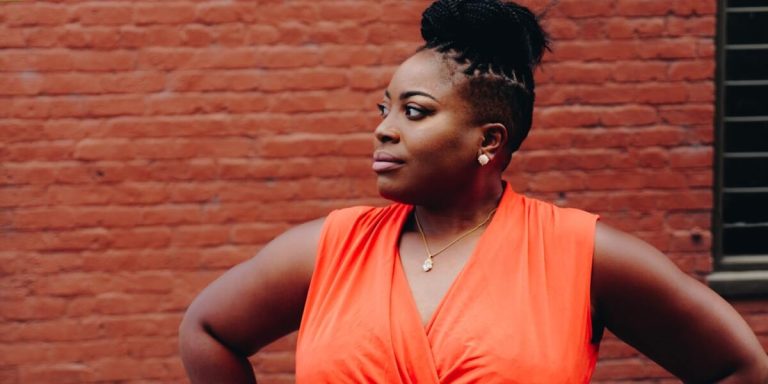Treatment for Hair Loss After COVID: Navigating Post-Pandemic Thinning Tresses
The global pandemic brought about several unforeseen challenges, one of them being the surprising connection between COVID-19 and hair loss. Many recovering patients have noticed a distressing symptom – their hair falling out in alarming amounts. As such, seeking treatment for hair loss after covid has become vital for many individuals aiming to regain their pre-pandemic confidence and appearance.
This unexpected bodily response is primarily due to Telogen effluvium, a temporary phase where significant stress or shock causes an increased number of hairs into resting (telogen) stage simultaneously leading eventually to prominent thinning or shedding of locks. We delve deeper into this phenomenon while focusing on effective treatments that can help manage post-COVID related hair fall issues efficiently.
Did you know?
Interestingly, studies report that around 20% of COVID-19 survivors experience temporary hair loss as a side effect due to the stress and high fever caused by the virus. This condition is known as telogen effluvium.
Understanding Post-COVID Hair Loss: Causes and Symptoms
It’s increasingly observed that after battling COVID-19, many individuals are experiencing an unexpected malady – hair loss. While it may seem alarming initially, this post-COVID symptom is typically a result of the high stress and trauma induced by the viral infection. Essentially, our body diverts its energy towards vital functions during sickness which often results in shedding more hairs than normal – a phenomenon called telogen effluvium.
However, there’s no need to panic if you have started noticing clumps of hair on your pillow or shower drain post-recovery from coronavirus. This type of hair fall generally begins 2 to 3 months following any significant illness or emotional distress; hence observing such symptoms weeks after bouncing back from COVID isn’t unusual.
Remember though, proper diagnosis remains paramount before concluding this as ‘post-Covid Hair Loss’. Other factors like hormonal imbalances and deficiencies could also cause similar issues with hairs falling out excessively. Therefore consulting medical experts upon first-hand observation can help devise appropriate treatments for addressing this undesirable aftermath of Covid recovery.
Recognizing the Signs of COVID-Related Hair Shedding
The COVID-19 pandemic has brought many unexpected health challenges, one of which is hair loss. While it may be alarming to see your locks thinning after recovering from the virus, understanding that this is a temporary condition can offer some consolation. Recognizing the symptoms early on will allow you to seek treatment for hair loss after covid promptly and efficiently.
In most cases, individuals start noticing excessive shedding about two to three months post-recovery. This phenomenon called Telogen Effluvium –a form of temporary hair fall– occurs due to severe illness or stressors such as those experienced during COVID-19 infection.
Hair normally grows in cycles with 90% being in an active growth phase (anagen) while only 10% are resting (telogen). Stressful events can disrupt this cycle causing more hairs than usual to enter into the telogen stage resulting in increased shedding when brushing or washing your hair.
Symptoms indicative of COVID-related hair loss include:
1. Increased Hair Shedding: You might notice clumps coming off onto your brush or blocking your drain.
2. Thinner Ponytail: For women who tie their strands back – there’s less volume than before.
3.High Receding Hairline/Bald Patches: More visible scalp could mean potentially serious fallout requiring immediate attention.
It’s crucial not just identifying these signs but also documenting them accurately – take photos over several weeks monitor changes carefully because early detection plays a vital role combating effectively any potential issue related “hair loss treatments”.
The Connection Between Coronavirus Infection and Hair Loss
The COVID-19 pandemic has thrown a curveball in our understanding of viral infections and their long-term effects. One surprising side effect that has come to the forefront is hair loss after recovery from Coronavirus infection.
Medical professionals termed the phenomenon as “telogen effluvium,” which refers to temporary hair shedding following periods of intense physical or emotional stress. In this case, battling an intense virus like SARS-CoV-2 qualifies as such a stressful event capable of triggering increased hair fall.
So how does it occur? Here’s what you need to know:
During normal circumstances, around 90% of your hairs are actively growing while about 10% remain dormant before eventually falling out. However, acute trauma can push more strands into this resting phase prematurely causing them to shed simultaneously some weeks later.
Now with COVID-19 specifically, patients experience high fevers along with significant physiological stress—two factors known for prompting telogen effuvium events in individuals predisposed genetically towards developing these occurrences.
COVID-infected people may notice noticeable thinning or bald spots anywhere between two weeks and three months post-recovery due largely because their bodies become overwhelmed by trying fight off said pathogenic intruder effectively leading unnecessary frightful revelation: they’re losing lots locks seemingly overnight! But fear not; there’s good news too!
Exploring Medical Treatments for Post-COVID Hair Restoration
Exploring these treatments for hair loss after COVID requires understanding two key elements: cause and effect. Post-viral effects like Telogen Effluvium – a form of temporary hair fall often experienced after recovery from severe illnesses such as COVID-19 – result in significant hair thinning or balding patches across the scalp owing to distress caused by the infection.
A widely recognized solution rests within biotin supplements which promote healthy growth by replenishing lost nutrients essential for strong follicles while improving overall scalp health. Additionally, doctors may also prescribe Minoxidil (commonly known as Rogaine), a topical medication stimulating blood flow towards hair follicles thereby invigorating new growth cycles.
Alternatively, there’s low-level laser therapy (LLLT) that uses photons irradiation on affected areas stimulating cellular activity hence promoting regrowth alongside reducing inflammation associated with Androgenetic alopecia – another common condition triggered due to stressors linked with our current global scenario.
Finally yet importantly lie more advanced procedures like Platelet-Rich Plasma Therapy where your blood’s platelets are utilized to stimulate restoration via injecting them back into affected regions assisting natural healing mechanisms leading not just to renewal but healthier thicker strands too!
Pharmaceutical Options for Managing Telogen Effluvium
Telogen Effluvium is a common type of hair loss triggered by physical or emotional stress, with the COVID-19 pandemic being a major contributor. For those grappling with Post-COVID hair shedding, there are several pharmaceutical options available in 2023 to manage this condition effectively.
One avenue worth exploring is Over-The-Counter (OTC) drugs like Minoxidil. Widely known for its brand name Rogaine, it’s applied topically and works by prolonging the growth phase of your hair follicles. With regular use over few months, it significantly reduces hair fall and even encourages new growth.
Another option on prescription basis includes Finasteride tablets offered under brands such as Propecia or Proscar. It operates by blocking DHT – an essential hormone contributing to male pattern baldness – thus slowing down thinning and promoting fresh sprouts.
Alternative therapies also show promising results against Telogen Effluvium caused due to post-covid recovery period including Platelet-Rich Plasma (PRP) treatments. They involve using platelets derived from patient’s own blood which when injected into scalp stimulate cellular division resulting in thicker full-bodied strands thereby restoring former glory!
Breakthroughs in Topical Treatments for Enhancing Scalp Health
In the past few years, particularly post-COVID-19 era, an emerging concern has been hair loss. With countless individuals worldwide experiencing this unwelcome aftermath of the virus, medical science had to rise up and answer this new challenge swiftly.
Marking a relatively new frontier in hair restoration treatments are topical solutions specifically designed for enhancing scalp health after COVID-related ailment. The spotlight here is on Minoxidil and Finasteride – two stalwarts showing promising results.
Minoxidil works by directly stimulating follicular growth and slowing down any ongoing shedding process. It’s available over-the-counter as Rogaine or under other brand names. This treatment requires no prescription but patients are advised to consult with their healthcare provider before starting use due to potential side effects that might include skin irritation or rapid heartbeat.
On the other hand, we have Finasteride – a potent oral medication which can significantly reduce DHT (dihydrotestosterone) levels causing hereditary pattern baldness when taken daily in appropriate doses prescribed by professionals.
Lifestyle Adjustments to Combat Post-Covid Hair Thinning
With the world gradually recovering from Covid-19, one unanticipated aftermath many face is post-Covid hair thinning, a condition commonly known as Telogen Effluvium. However, don’t lose hope just yet – with few lifestyle adjustments and targeted treatment methods specifically crafted for this issue becoming increasingly available in 2023.
To start tackling the problem at its roots (pun intended), it’s essential to revamp your diet plan promptly. Nutritional deficiencies can exacerbate hair loss, so ensure you intake adequate amounts of proteins and vitamins necessary for healthy scalp like Vitamin A,C,E & Biotin that promote cell growth and sebum production which acts as natural conditioner for your locks.
Last but certainly not least – sleep! Never underestimate power behind getting good quality rest every night because lack thereof could lead towards hormonal imbalances triggering even more unwanted thinning on top head region . So make sure get those full eight hours each day without fail!
Nutritional Strategies to Strengthen Follicles After Illness
As the world continues to grapple with post-Covid complications in 2023, hair thinning remains a significant distress. While various treatments for hair loss are available, nutritional strategies shine as effective solutions that can reinforce your follicles from within.
One notable approach is consuming protein-rich foods. Hair follicles primarily consist of proteins such as keratin. Hence, incorporating lean meats like chicken and turkey or vegetarian alternatives like tofu into your daily diet can provide needed nutrients to strengthen weakened follicles after illness.
Don’t forget about iron; it’s essential too! Iron-deficiency anaemia has been linked to hair loss due to its vital role in carrying oxygen for cell growth- including those responsible for good quality hair strands. So don’t hesitate on adding dark green vegetables like spinach and kale along with beans and whole grains which are rich sources of this key element .
Omega-3 fatty acids should also be included in the everyday menu. These help nourish the scalp keeping it healthy thereby reducing further instances of thinning or breakages after Covid recovery . Fatty fish options like salmon , mackerel or plant-based sources such as flaxseeds can serve you right!
Biotin intake could prove beneficial too ! A deficiency often leads into brittle hairs & consequent fallout making foods containing biotin ( eggs cheese avocados) an integral part if looking at treatment for hair loss .
Stress Reduction Techniques That Promote Hair Regrowth
In recent times, hair loss after Covid has emerged as a new health concern. While there are various medical treatments available for this condition, incorporating stress reduction techniques into your daily routine can complement these efforts and promote healthier hair growth.
One of the main reasons behind post-Covid thinning is psychological distress caused by long-term illness. Therefore, taking active steps to mitigate such stress not only improves your overall wellbeing but also helps in stimulating hair regrowth.
Meditation: Meditating regularly reduces cortisol – widely known as ‘the stress hormone.’ By lowering cortisol levels in our body, we create an optimal environment that encourages healthy hair follicles development.
Yoga: Another mindful practice is Yoga; it promotes better blood circulation throughout the body. Increased scalp blood flow means more nutrients reach your roots leading to stronger and thicker strands.
Balanced Diet: Eating nutrient-rich food adds another layer of defense against lockdown locks or quarantine quiffs! A diet rich in protein ( eggs & fish), iron (spinach & lentils), vitamins C& E (berries & nuts) works together towards strengthening tresses from within.
Quality Sleep: Ensuring adequate rest goes hand-in-hand with other de-stressing habits like yoga and meditation which further support natural healing processes including cell regeneration- important for maintaining strong hair follicles!
Exercise Regularly: Just 30 minutes of brisk walking or light aerobic activity every day boosts endorphins aka ‘feel good’ hormones limiting any negative impact on your crowning glory!
Conclusion
In the wake of COVID-19, restoring your lustrous locks might seem challenging. But remember, with patience and the right “treatment for hair loss after covid”, it’s only a matter of time before you reclaim your crowning glory. Advances in science offer hope for those navigating post-pandemic thinning tresses.
Don’t let worry hold you back! Our website is chock-full of takeaways on various ‘Hair Loss Treatments’, curated just to suit people like you who are seeking effective solutions. So stick around, probe through our vaults filled with valuable insights; because nurturing strong & healthy hair could be one click away!







